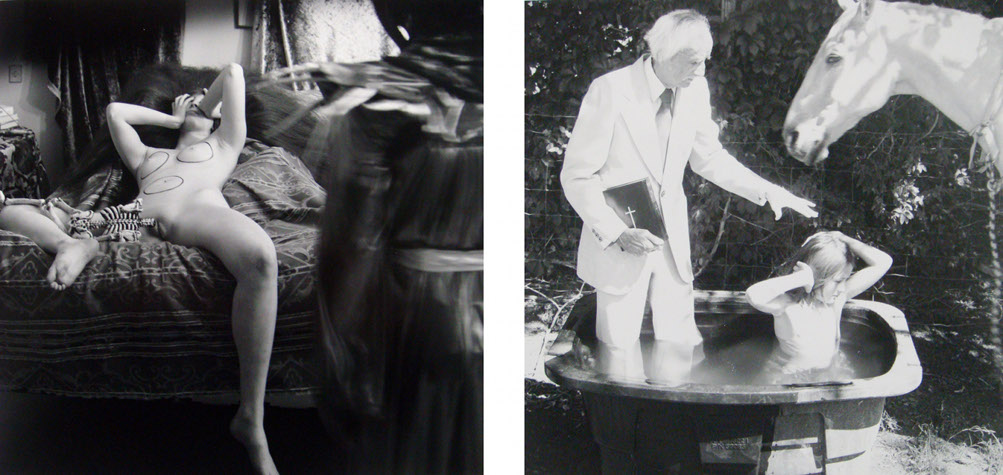Biographical Data
Born in Brooklyn (New York), in 1939. He lives and works in Albuquerque, New Mexico. Joel-Peter Witkin studies at the University of New Mexico and, later, at Cooper Union School of Art. During his military service he records, through photography, accidents and suicides. His first individual exhibition takes place in 1969. His work as a photographer does not follow any particular artistic movement but is world-renowned.
Brief Chronology
In 1976 Joel-Peter Witkin begins to seek inspiration in the works of the great painters, especially in Christian religious scenes (martyrs, saints, vanitas) or mythology and creates their photographic versions. He scratches, draws on the negatives, treats them with emulsions of different products (soy sauce, acetone, eye drops, etc.) to “modify the aspects of reality he doesn’t want to see”. His photographic works are a meditation on death, the reality of bodies, sexuality, and the dark side of the human nature. He says that his “physical/psychical collages” of transsexuals (Bacchus Amelius, 1986), of corpses or of physically disabled people are a “form of transubstantiation”, “the conversion of matter into something spiritual”. Sometimes his pictures are not precisely pleasant to watch, compositions of hybrid beings made with different body pieces, metamorphosis of bodies in morgues, amputated or deformed bodies, etc. He declares: “Man is the nucleus of all my work. I take pictures of human beings or, in any case, of objects that are closely related to human life and frailty. (…) I want to come close to the person, to the condition of the human being, of all human beings; all the rest, signification, cultural identification… don’t interest me. This is why I photograph naked people. This way they are frail, like when they were born, they are as they appear in front of their doctor or lover”.
P.L.T.

Visitation, Paris/New Mexico (diptique), 2004, Print on silver paper, 27,1 x 27,5 cm / 10,6 x 10,8 in.